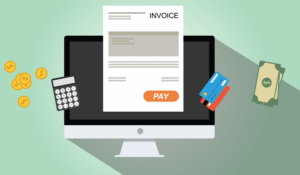
Therefore, before you opt for this type of financing, you’ll want to consider and compare all of your options to ensure that you find the best, most affordable solution for your business. Invoice financing is sometimes used Bookkeeping for Chiropractors as an umbrella term for financing secured by customer invoices as well for factoring. However, technically it refers to a loan (usually a short-term loan) secured by accounts receivable. Most types of businesses that regularly invoice other businesses, but need to get paid more quickly, can be a candidate. However, invoice factoring or financing is typically not a fit for B2C companies or subscription-based revenue companies. The fact that your collateral is your invoice may mean some types of businesses immediately won’t qualify.
- When applying for invoice financing, you start by showing unpaid invoices for work or services already provided to a financing company.
- Invoice financing (also called accounts receivable financing) is one of the most popular small business loans that allow businesses to use unpaid invoices as collateral in exchange for upfront cash.
- You also want to pay attention to fee structures since different invoice financing and factoring companies charge fees differently.
- The application and approval process for invoice financing is faster compared to other loan options.
- Lenders like AltLINE and Triumph Business Capital, on the other hand, offer invoice factoring.
Ineligible Invoices for Invoice Financing

Therefore, of the $15,000 held in reserve by the financing company, you’ll only receive $10,000 ($15,000 – $5,000 in fees). All in all, invoice financing would have cost you $5,000 of the original invoice amount, which equals an estimated APR of roughly 70%. Invoice financing often makes sense when a business needs to get funding more quickly and can’t qualify for less expensive financing. It may also be an option for small business owners who have a harder time qualifying for financing due to the industry they’re in, time in business, credit scores or other qualifying factors.
- With this type of business loan, you take out a line of credit using a percentage of the value of your unpaid invoices as collateral.
- We make it easier for you to secure the funding you need to grow your business.
- Invoice financing is usually a better option for businesses that want to maintain control over invoices and deal with their customers directly.
- The amount you can borrow is based on the value of your business’s inventory, but typically, you can only qualify for between 20% and 65%.
- If you’re a business owner who uses invoices, waiting for your B2B customers to pay can be a huge drag on your resources.
Ready to grow your business?
If you’re a business owner who uses invoices, waiting for your B2B customers to pay can be a huge drag on your resources. Businesses with good credit and that meet other business lending qualifications may want to consider other lower-cost financing options, such as a business line of credit. Once approved, it advances 80 percent to 90 percent of the unpaid invoices, which you can use for any business expenses. Invoice factoring can be considered a type of invoice financing, so you may see the terms used interchangeably when referring to factoring. The offers that appear on this site are from companies that compensate us.
Invoice Financing vs Invoice Factoring
- If you need to keep the arrangement discreet, find a funder willing to honor that.
- The invoice financing company agrees to lend Kay’s Catering 80% of the $20,000 invoice they’re waiting on with a 4% interest fee for every 30 days the loan is unpaid.
- With invoice financing, you pay for fast and immediate access to your capital, freeing up your cash flow that’s being held up in unpaid invoices.
- By providing feedback on how we can improve, you can earn gift cards and get early access to new features.
- However, unlike those types of lending, you generally do not need to provide assets as collateral, nor are you required to supply a personal guarantee.
- Instead, invoice factoring is a type of cash advance based on your outstanding invoices.
The editorial content on this page is not provided by any of the companies mentioned and has not been reviewed, approved or otherwise endorsed by any of these entities. Our financial advisors will get in touch with you to discuss your options at no cost or commitment on your part. Let’s look at invoice financing and what to expect when you apply for it. Also, legal and regulatory aspects can vary by location, so be informed. Invoice finance can help you collect up to 95% of what’s owed to you, in just a day or two.

These tools can also provide reports to help you make more informed decisions, including data that can help you determine whether invoice financing would be a good fit. An invoice financing invoice financing bank company advances you a percentage of the invoice value in exchange for a small fee. You still own the invoice and have to collect payment for it, but you’ll receive the money you need in the meantime.

It focuses on your client’s ability to pay online bookkeeping the invoices, so lenders are more willing to work with small business owners who don’t have good credit. Invoice financing helps you use unpaid invoices to secure financing and cover cash flow gaps. But fees easily get expensive compared to conventional business loan interest rates. These fees may be called a processing fee, discount rate or factoring rate and are usually a percentage of the invoice amount.
Benefits of Invoice Financing for Small Business
Even before the start of the new administration, there has been repeated blurring of lines between the federal government efforts and Trump family businesses. Try Ramp and see why customers save an average of up to 5% a year across all spending. Invoice financing offers benefits but requires careful consideration. By subscribing, I accept the privacy-policy and I give my consent to receive Swoop Funding e-mails about the latest updates and offers. Join the 95,000+ businesses just like yours getting the Swoop newsletter. Help us to improve by providing some feedback on your experience today.
